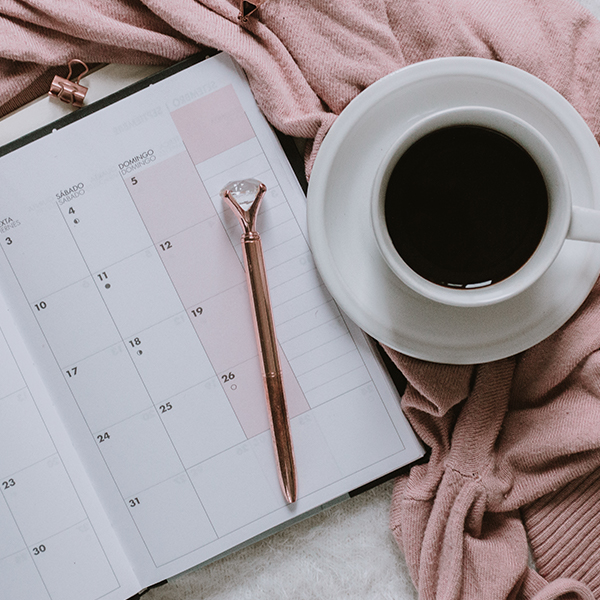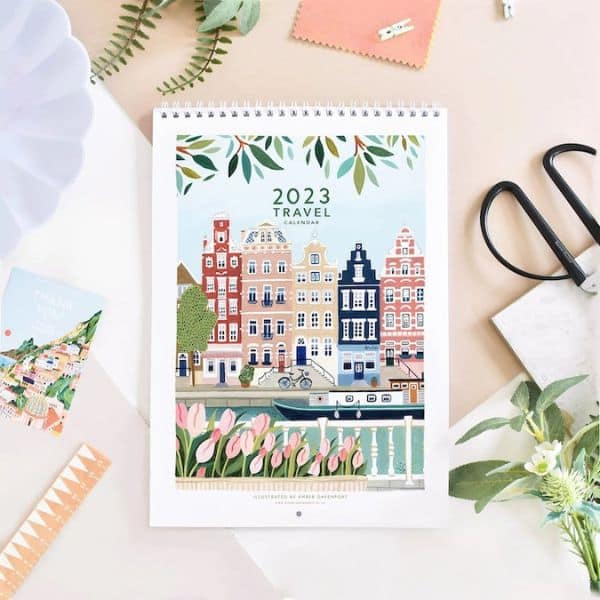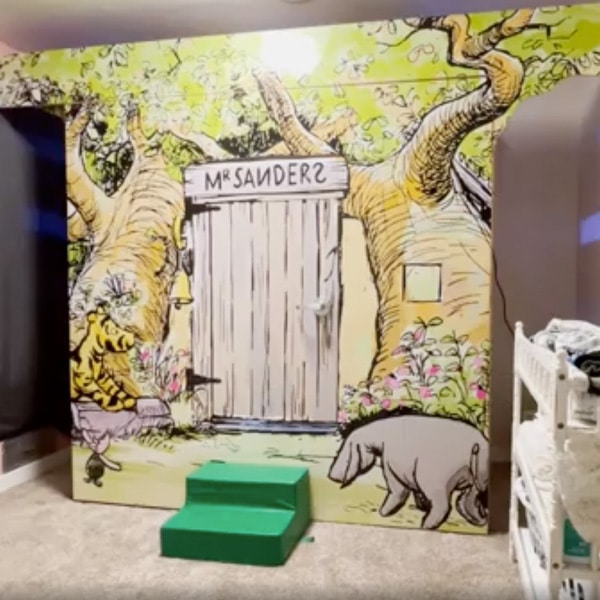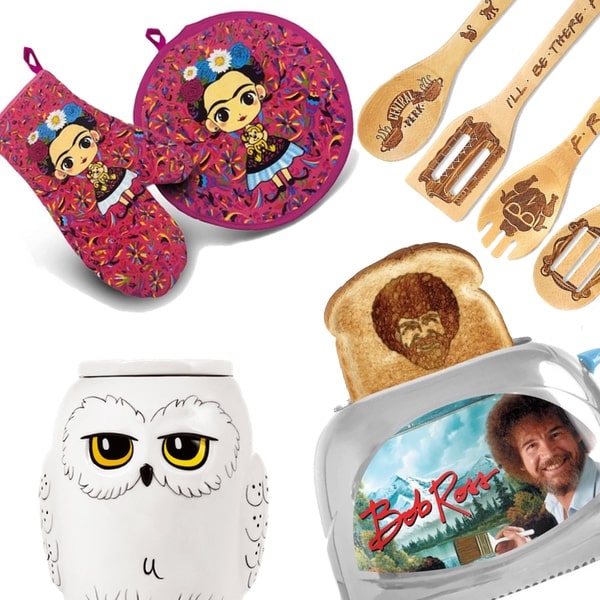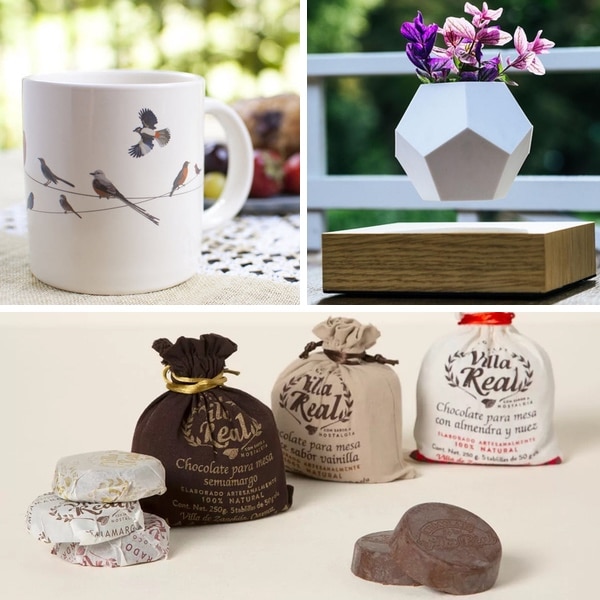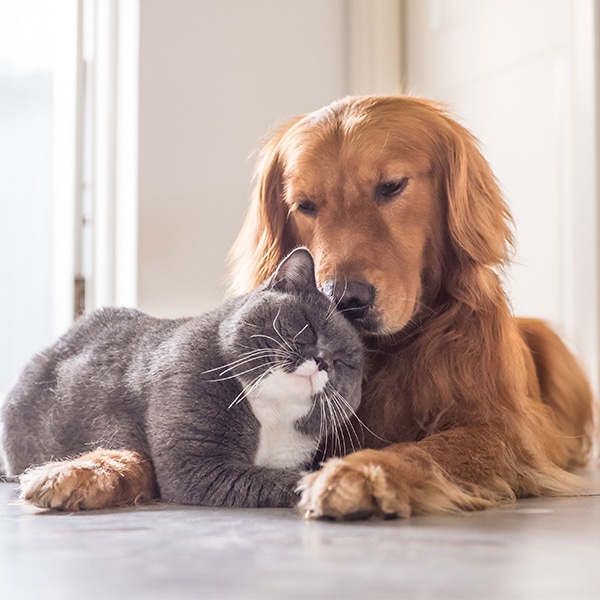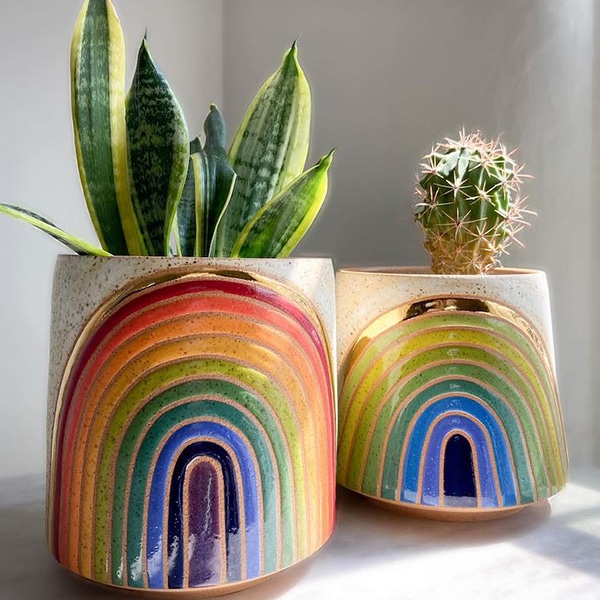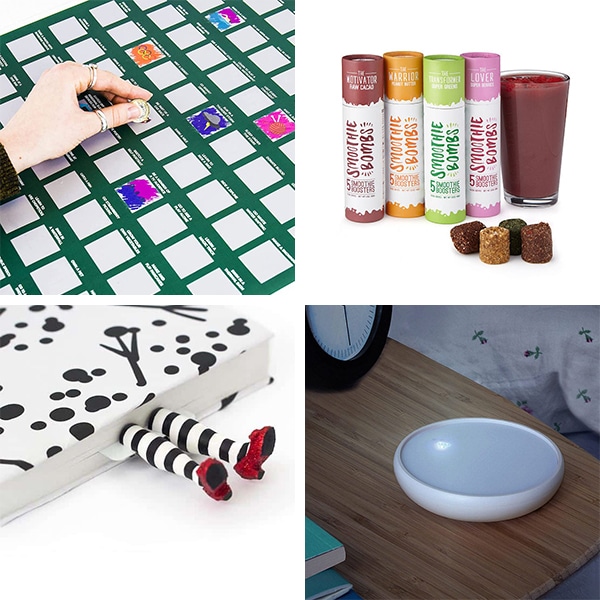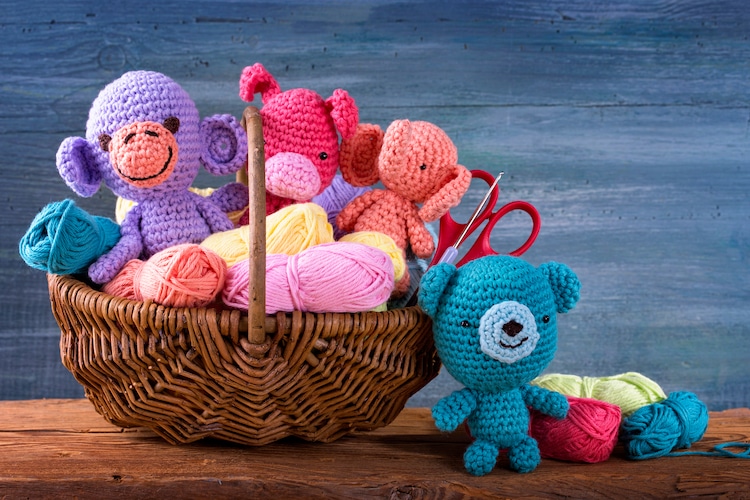
Photo: Stock Photos from Elena Schweitzer/Shutterstock
This post may contain affiliate links. If you make a purchase, My Modern Met may earn an affiliate commission. Please read our disclosure for more info.
Learning handcrafts like crochet can bring you joy for a lifetime. The skills gained offer you the chance to exercise your creativity while challenging you to produce bigger and better things. Although the endless possibilities might seem daunting, crochet is easy to get started; there are just a couple of tools and basic techniques you need to know. From there, you can grow increasingly advanced in your work and try different facets of the field.
When you’re first learning crochet, scarves are a popular place to start; after all, it’s simply a long rectangle! But once you grow more comfortable with your crochet hook and are ready to take on more challenging projects, there are ways to create your own small sculptures. Using the techniques of amigurumi, you can construct plush toys that are as cute as they are fun to make.
What is Amigurumi?
Amigurumi is a popular type of crochet. The word is a portmanteau of two Japanese terms: ami, which means crocheted or knitted; and nuigurumi, a stuffed doll. It often takes the form of an animal or fantastical creature with an aesthetic that's best described as kawaii or cute. This makes amigurumi ideal for kids or anyone that likes button noses and rosy cheeks.
Amigurumi exploded in popularity in the early aughts, particularly because it caught on in the West. Thanks to sites like Etsy, Pinterest, and the online knit and crochet community Ravelry, the influence of these dolls only grew. Now, you can buy them fully formed by a crocheter, or craft your own using a pattern—many of these directions are available to purchase online. (We’ve selected some of our favorites here!)
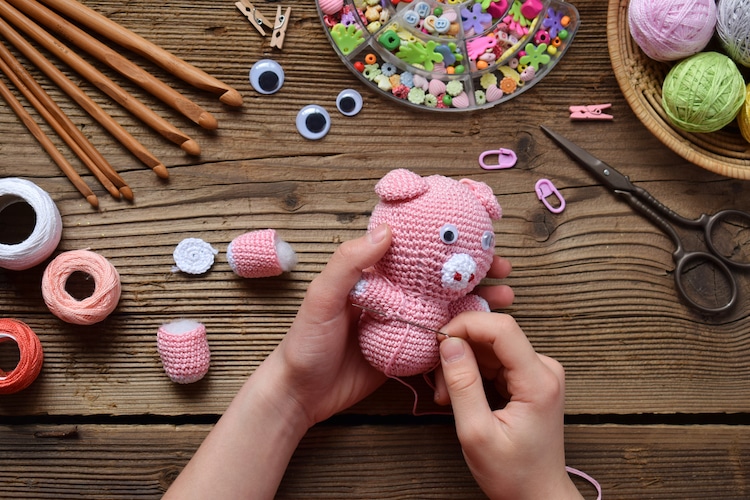
Photo: Stock Photos from Oksana_Slepko/Shutterstock
Supplies Needed for Amigurumi
Amigurumi is an accessible form of crochet that both beginners and seasoned crafters can enjoy. It uses basic techniques that include the single stitch, double stitch, and invisible decrease. Before you get started crocheting, make sure you have these tools on hand.
Yarn — There are a lot of yarns that exist on the market, and not all of them are good for crochet amigurumi. A yarn that is too fluffy can be challenging to work with (especially when using a small hook), and the fuzzy fibers can obscure the details in your doll. Here are three popular types of yarn for amigurumi:
- 100% cotton and mercerized cotton yarn. This type of yarn is tightly spun so you won’t see any fibers.
- Semi-cotton blend (50% cotton, 50% acrylic) yarn. If you select this yarn, it will be more lightweight and can be machine washed. Depending on your project, the semi-cotton blend might be the best choice. It’s not as heavy as 100% cotton yarn, meaning stitches won’t as easily pull out of shape the larger your project gets.
- Acrylic yarn. If you are budget conscious for your crochet, then acrylic yarn will get you the most bang for your buck. There are some drawbacks, however; it can be fibrous and be hard to see details, and the yarn can pull out of shape easily if it’s not stitched tight enough.
Small gauge crochet hook — You’ll want a small gauge hook for amigurumi because you don't want the stuffing of the doll to show through. Refer to your pattern for what size of hook to use.
Stuffing — Stuffing (such as polyester or cotton) will give your doll shape and bring it to life.
Pipe cleaners or floral wire — Some, but not all, amigurumi have posable features. Pipe cleaners or floral wire can be used as armatures to make the doll “move.”
Pebbles — If you want to ensure that your creation will stay standing, small stones can be used to distribute the weight on the bottom of the doll.
Where to Learn Amigurumi
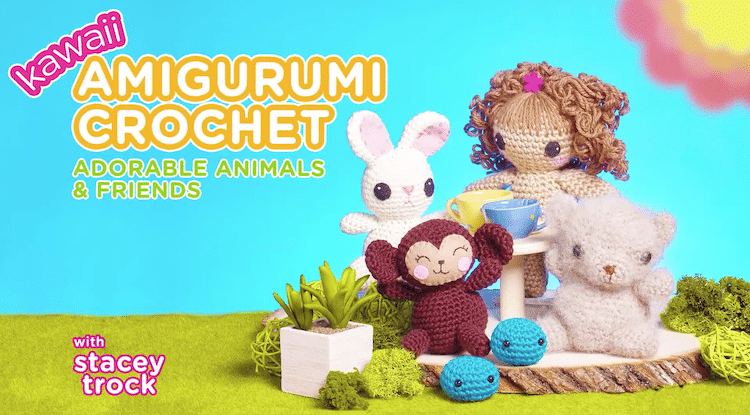
Photo: Kawaii Amigurumi Crochet: Adorable Animals & Friends
Online Learning
The online learning site Skillshare has a couple of classes that will teach you the basics of the craft as well as demonstrate how to design your own creature.
Try these classes:
- Make a Simple Crochet Amigurumi Bee: Beginner Friendly
- Beginner Amigurumi:Design and Crochet Your Own Character
Video tutorials
YouTube also has tutorials available, and many of the free videos break down the process into simple steps.
Studio Crafti, for instance, shares how to make a standard head and body shape.
Chisette Designs demonstrates the best way to connect your amigurumi pieces.
Educational Books
There are also several books that can walk you through how to start making your own amigurumi pieces.
- Crochet Cafe: Recipes for Amigurumi Crochet Patterns by Lauren Espy: Learn how to make 30 adorable amigurumi sculptures inspired by food items and meals.
- Kawaii Crochet Garden: 40 Super Cute Amigurumi Patterns for Plants and More by Melissa Bradley: This beautiful book teaches students how to make 40 amigurumi creations inspired by a garden.
- Crochet Cute Critters: 26 Easy Amigurumi Patterns by Sarah Zimmerman: In this educational book, you'll learn how to make cute and floppy animal amigurumi characters.
- Whimsical Stitches: A Modern Makers Book of Amigurumi Crochet Patterns by Lauren Espy: This book is ideal if you want to learn how to make a range of amigurumi sculptures, like flowers, animals, and foods.
15+ Amigurumi Patterns to Try Today
Ready to start crocheting your cute doll? Here are some of our favorite amigurumi patterns, kits, and dolls available now!
André The Anteater Pattern
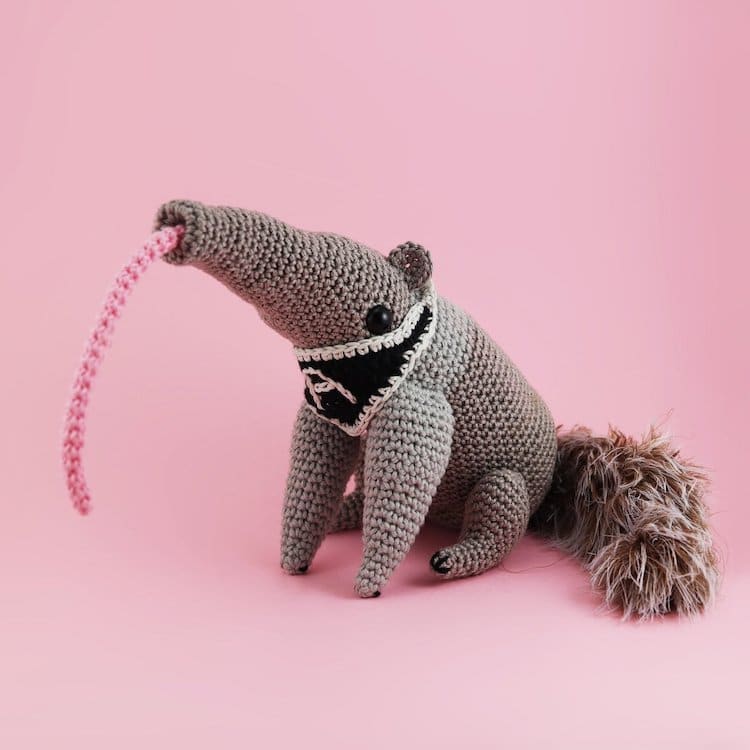
Irene Strange | $5.57
Beginner Dinosaur T-Rex Kit
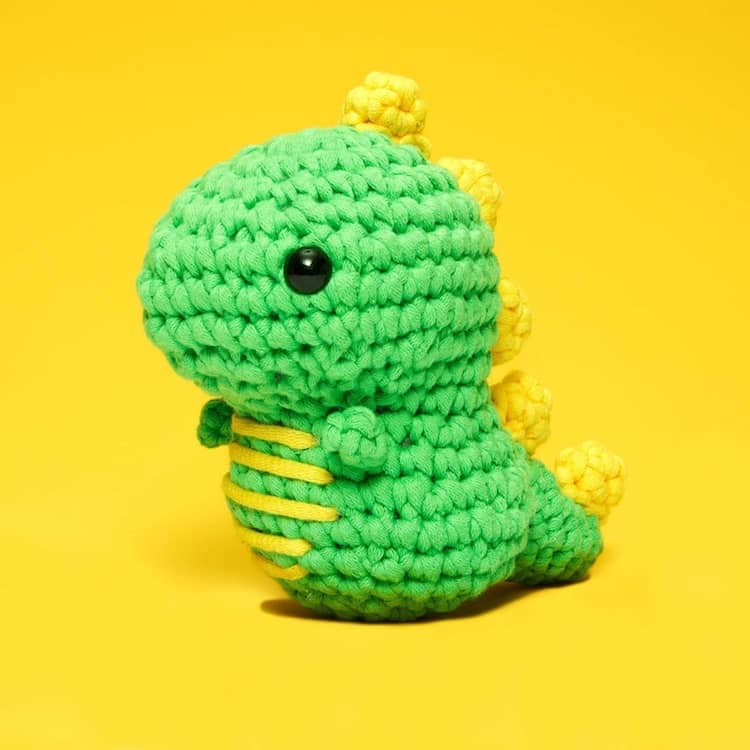
thewoobles | $25+
Bull Pattern
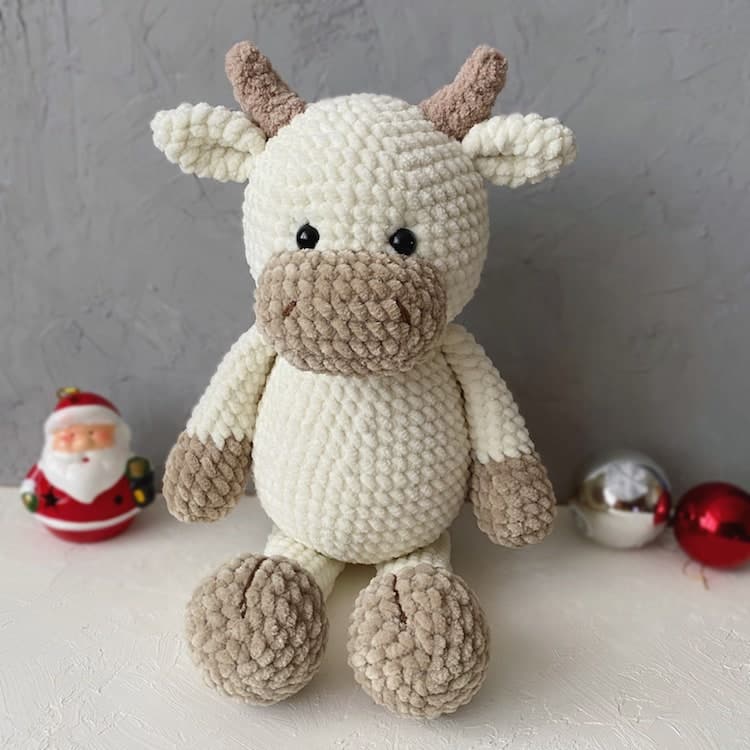
IamSulu | $1.50
Happy Veggies Toys

Rainbow Happiness | $68.80+
Ollie the Soth Pattern
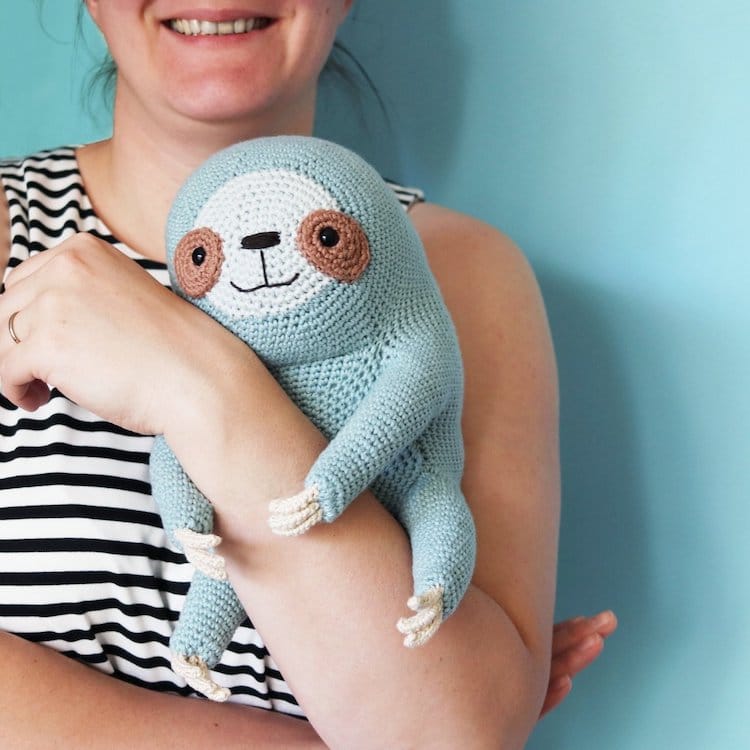
Irene Strange | $5.57
Carlotta the Fawn Pattern
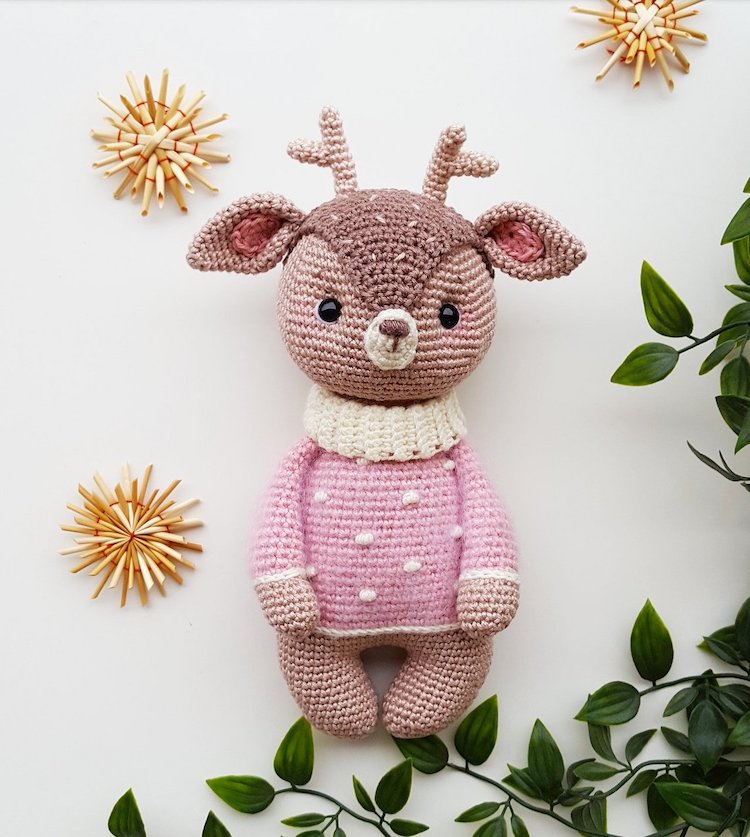
Amalou Designs | $5.59
Cow Pattern
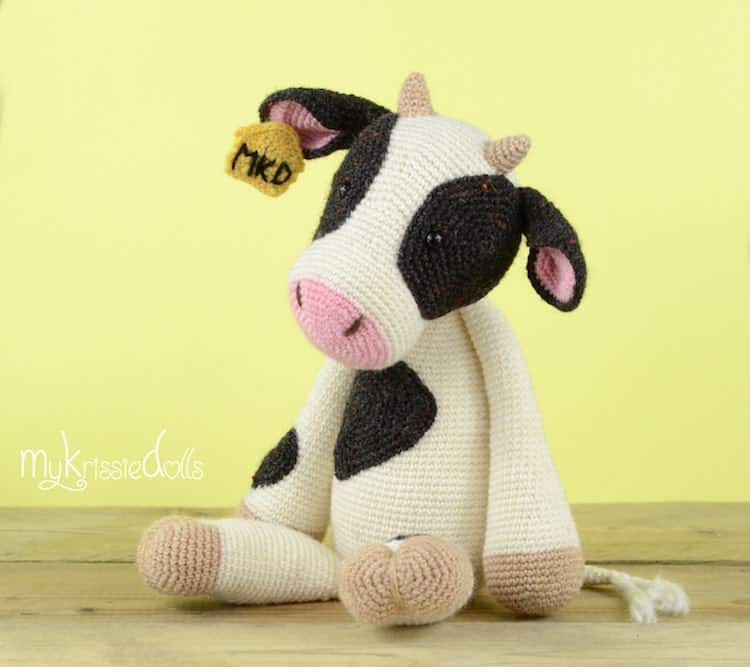
MyKrissieDolls | $5
Budgie Pattern
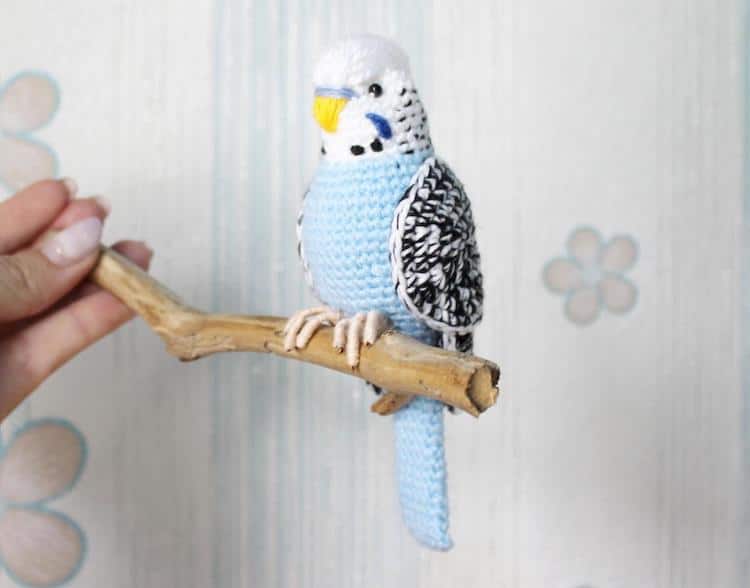
TNGiftsUA | $5
Crochet Bunnies
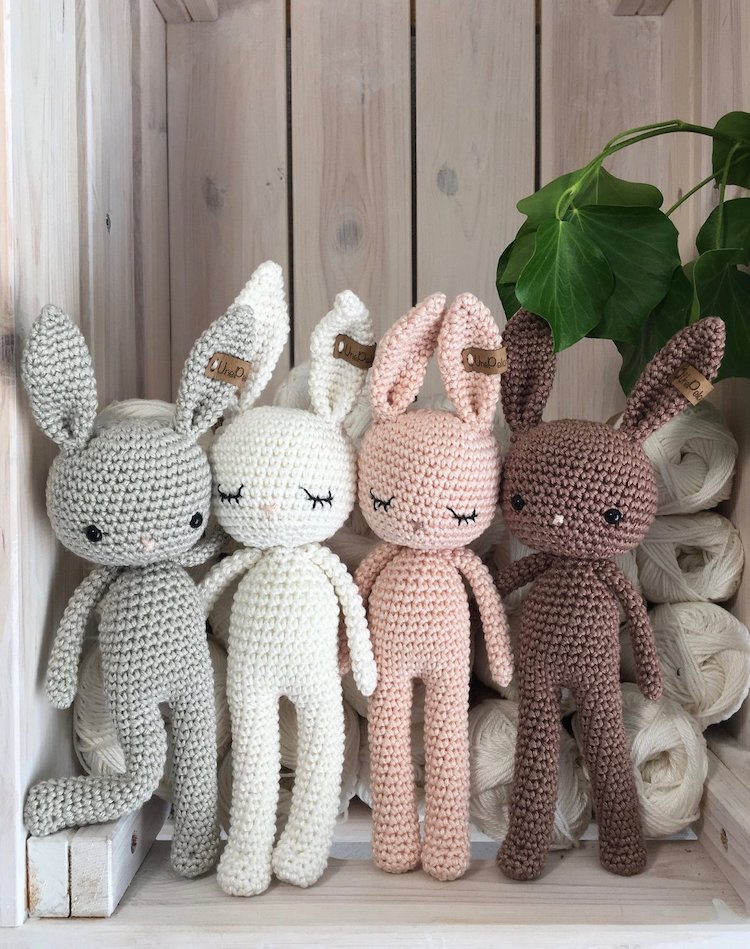
UnePelotedeLaine | $40.86+
Giraffe Pattern
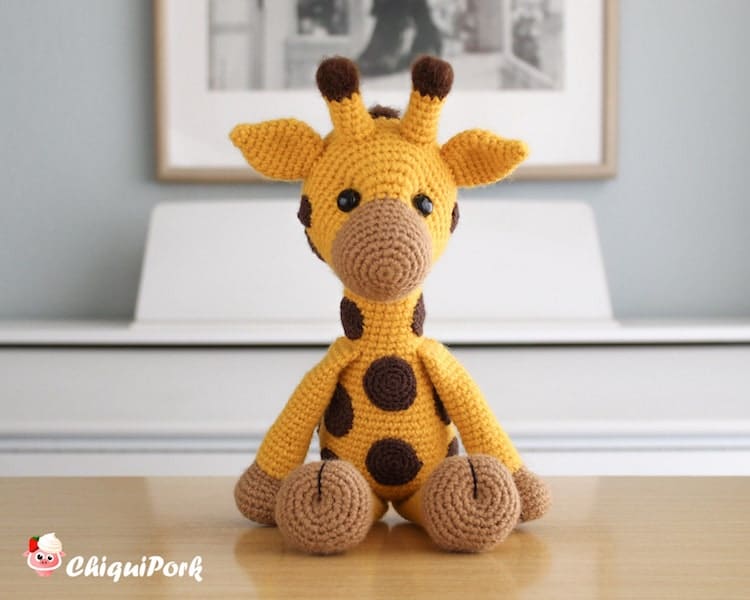
ChiquiPork | $5.21
Octopus Pattern
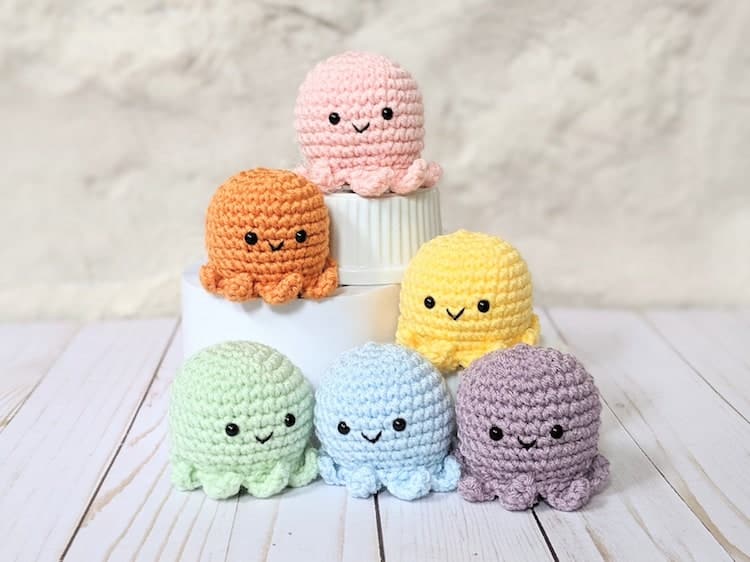
BabyCakesStudios | $3.95
Sheep Pattern
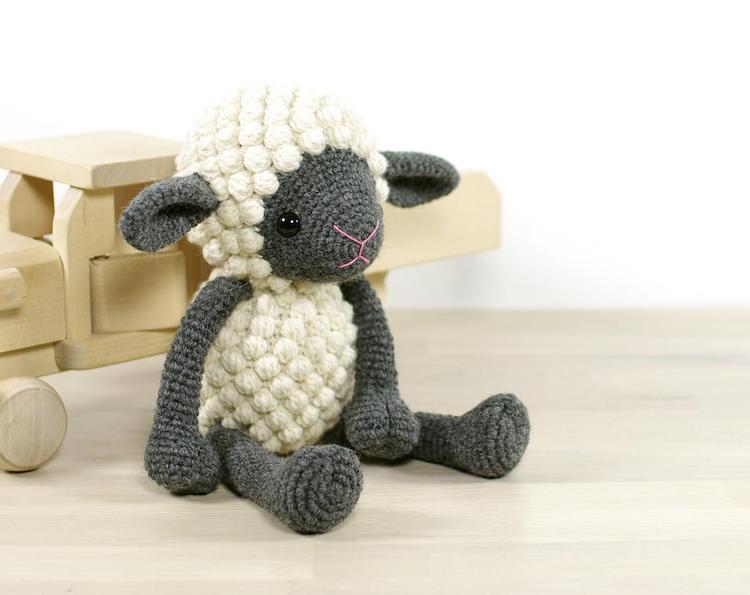
Kristi Tullus | $6.31
Oh My Llama Pattern
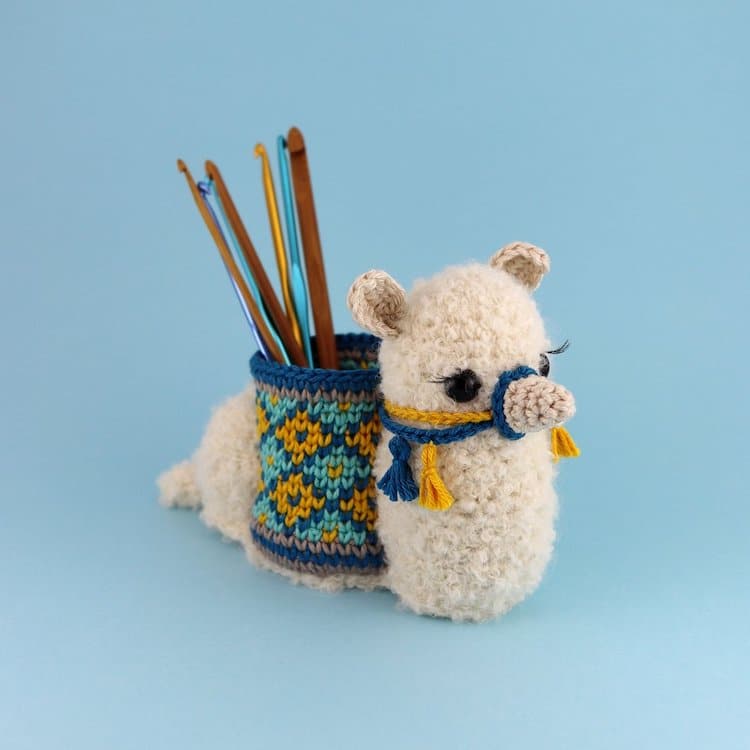
Irene Strange | $5
Crochet Kitty Pattern
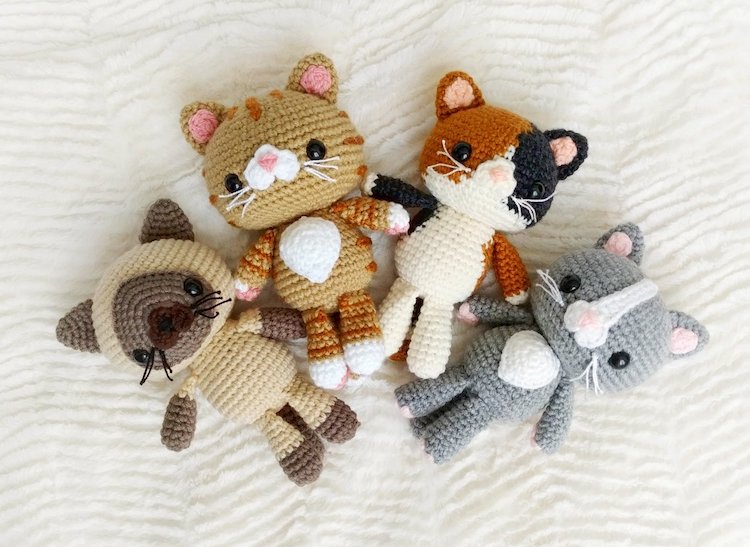
Ami Amore | $6
Percy the Squid Pattern
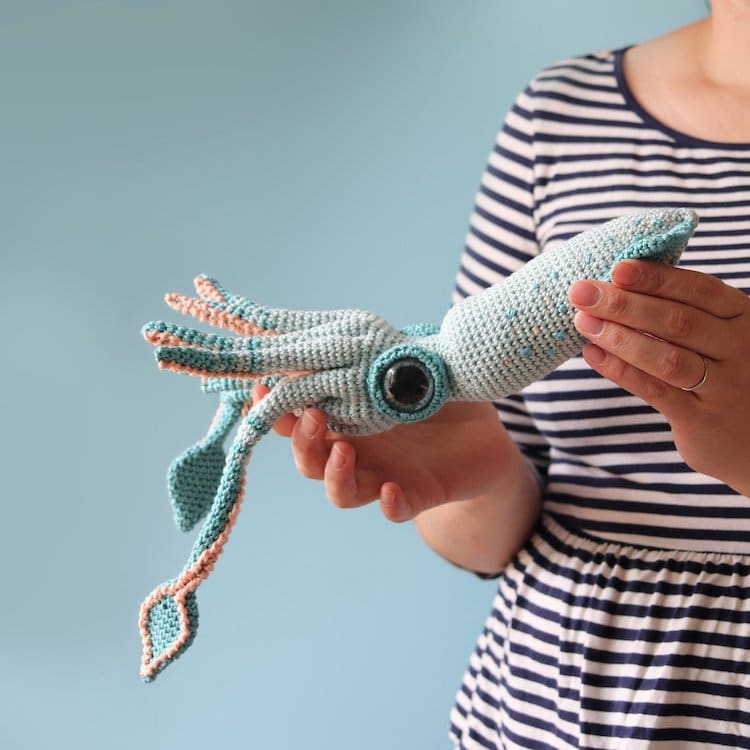
Irene Strange | $5.57
Horace the Stegosaurus Pattern

Irene Strange | $5.57
Nutcracker Pattern
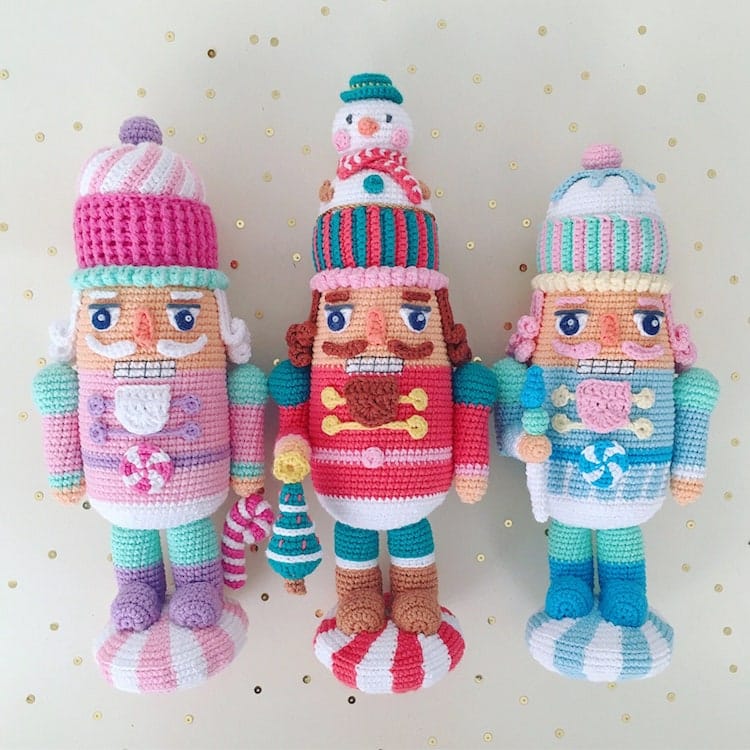
MissDaisyHandmade | $10.99
Duck Pattern

JuliiaPyha | $3
Sprite Pattern
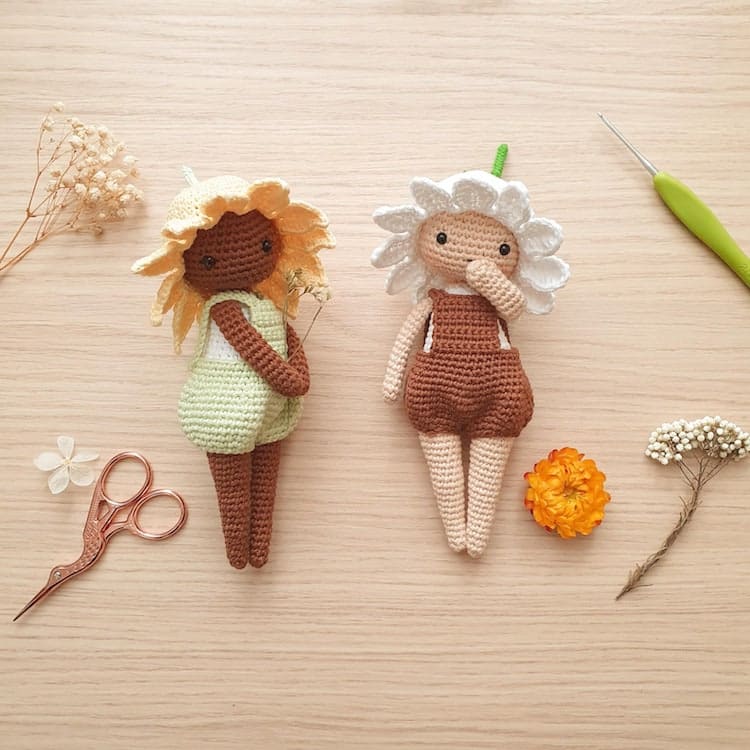
CritterStitchDesigns | $4.73
Frequently Asked Questions
What is the difference between crochet and amigurumi?
Amigurumi is a type of crochet that is used to create 3D objects like stuffed animals.
What does amigurumi mean?
The word amigurumi is a portmanteau of two Japanese terms: ami, which means crocheted or knitted; and nuigurumi, a stuffed doll.
Is amigurumi suitable for beginners?
Amigurumi is an accessible form of crochet that both beginners and seasoned crafters can enjoy. There are many online classes and video tutorials that can teach essential techniques to help you get started.
This article has been edited and updated.
Related Articles:
25+ Knitting Patterns You Can Start Working on Right Away
How to Make a Quilt: Learn Quilting Basics & Get Creative With Textiles
Modern Macramé: How an Ancient Fiber Art Has Resurfaced as a Beautiful Craft



































































